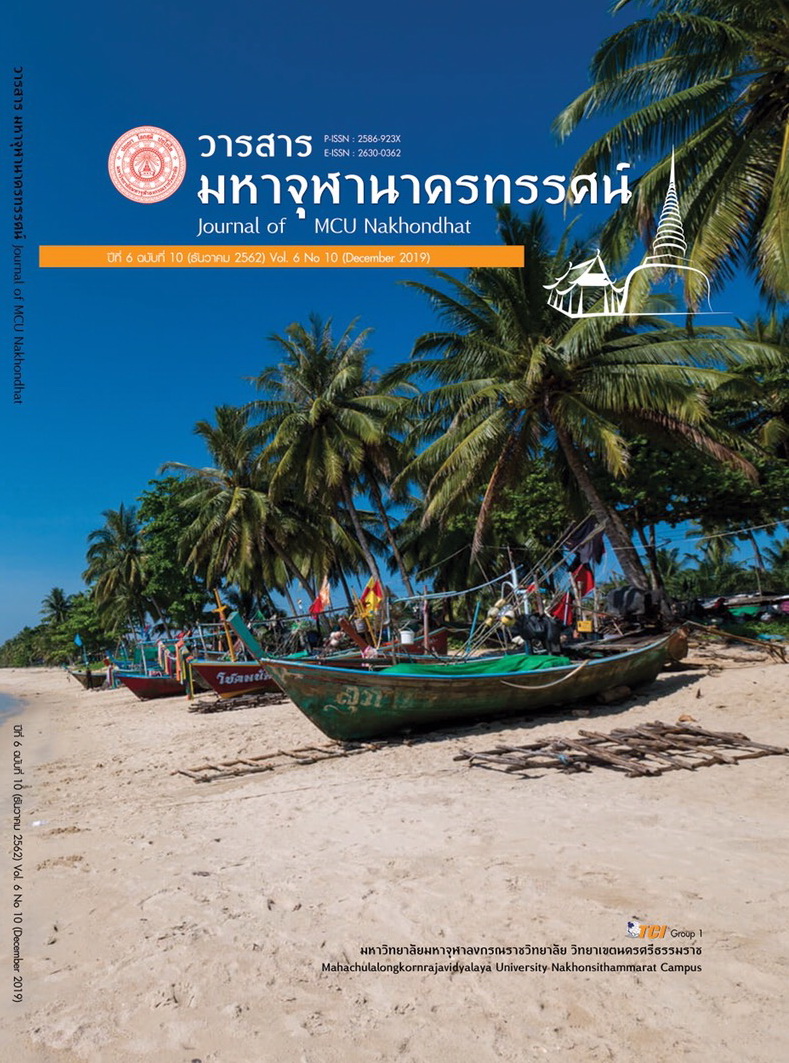ANTECEDENTS OF CUSTOMER LOYALTY IN THE STAINLESS STEEL INDUSTRY IN THAILAND’S EASTERN ECONOMIC CORRIDOR
Main Article Content
Abstract
The objectives of this research were to study antecedents of customer loyalty in the stainless steel industry in Thailand’s Eastern Economic Corridor.This research employed a qualitative research. The sample consisted of 340 entrepreneurs who use stainless steel as raw materials for producing products in eastern economic corridor.The sample size was determined based on Kline criterion of 20 times the observed variables. A questionnaire was used to collect the data. The data then were analyzed with structural equation modeling. The research findings showed that: service quality had the most influence on customer loyalty in stainless steel industry, followed by relationship quality, switching cost, and corporate brand equity, respectively. The research findings could be utilized by both government and private sectors related to stainless steel industries to formulate policy, strategy and working plan in order to increase capacity to build customers’ royalty among business operators in the industry. Moreover, improved policy or strategy also leads to increased effectiveness in their business operation.
Article Details
References
สำนักงานส่งเสริมวิสาหกิจขนาดกลางและขนาดย่อม. (2561). จำนวนผู้ประกอบการ จำแนกตามภูมิภาค และขนาดวิสาหกิจ. เรียกใช้เมื่อ 15 พฤศจิกายน 2561 จาก http://203.154.140.77/sme/Report/View/1188
Akbar M. M. (2013). Three competing models on customer loyalty in the context of mobile subscribers. International Journal of Marketing Studies, 5(4), 42.
Alkhawaldeh A. & Eneizan B. M. (2018). Factors influencing brand loyalty in durable goods market. International Journal of Academic Research in Business and Social Sciences, 8(1), 326-339.
Cronbach L. J. (1990). Essentials of psychology testing (5th ed.). New York: Harper Collins Publishers.
Crosby L. A. et al. (1990). Relationship quality in services selling: An interpersonal influence perspective. Journal of Marketing, 54(July), 68-81.
Demir A et.al. (2015). The relations among dimensions of service quality, satisfaction loyalty and willingness to pay more: Case of GSM operators service at Northern-Iraq. International Journal of Academic Research in Accounting, Finance and Management Sciences, 5(4), 146-154.
Griffin J. (1995). Customer loyalty: How to earn it How to keep it. United States of America: An imprint of Free Press.
Hagel J. & Armstrong A. G. (1997). Net gain: Expanding markets through virtual communities. Washington: McKinsey Quarterly.
Kline R. B. (2005). Principle and practice of structural equation modeling. New York: Guilford.
Lai L. H. et.al. (2011). The moderating effects of switching costs and inertia on the customer satisfaction-retention link: Auto liability insurance service in Taiwan. Insurance Markets and Companies: Analyses and Actuarial Computations, 2(1), 69-78.
Modern Manufacturing. (2017). เจาะลึกการลงทุนใน EEC (Eastern Economic Corridor) พื้นที่ยุทธศาสตร์เพื่อขับเคลื่อนประเทศไทย 4.0. Retrieved November 30, 2018, from https://www.mmthailand.comเจาะลึกการลงทุนใน-eec-thailand-4-0/
Saleem H. & Raja N. S. (2014). The impact of service quality on customer satisfaction customer loyalty and brand image: Evidence from hotel industry of Pakistan. Middle-East Journal of Scientific Research, 19(5), 706-711.
Samuelson W. & Zeckhauser R. (1988). Status quo bias in decision making. Journal of Risk and Uncertainty, 1(1), 7-59.
Williams P. & Naumann E. (2011). Customer satisfaction and business performance: a firm-level analysis. Journal of Services Marketing, 25(1), 20-32.

